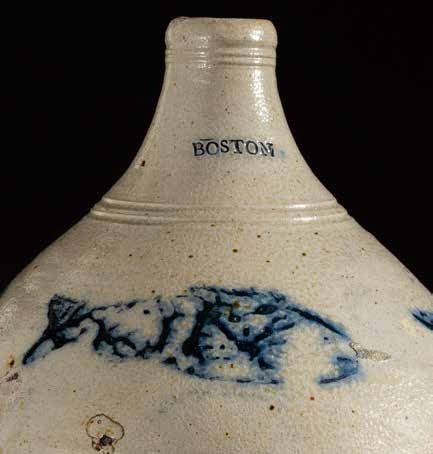
Detail of the stamp from the jar/jug illustrated in figure 11 used by William Little, Jonathan Fenton, and Frederick Carpenter, Boston, ca. 1793–1798.
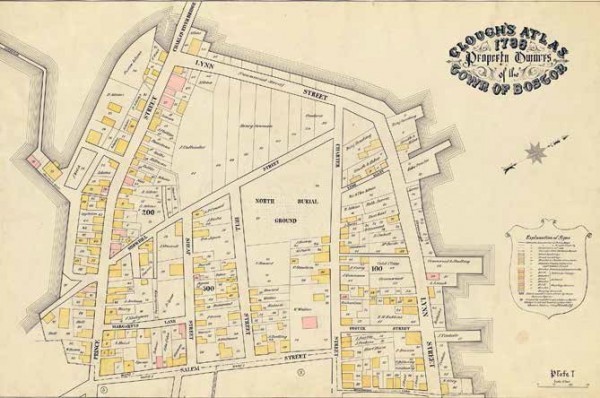
From Clough’s Atlas 1798 Property Owners of the Town of Boston, pl. 1. (Courtesy, Massachusetts Historical Society.) This is the first of twelve plates from an uncompleted atlas of maps prepared by Samuel Chester Clough, available online at https://www.masshist.org/online/massmaps/clough-plt-overviewer.php [image 1]. Jonathan Fenton’s pottery is located on Lynn Street.

Advertisement for the opening of Jonathan Fenton’s stoneware manufactory, Columbian Centinal, August 14, 1793.

Jug, Westerwald, Germany, ca. 1740–1760. Salt-glazed stoneware. (Courtesy, The Reeves Collection, Washington and Lee University; photo, Robert Hunter.)
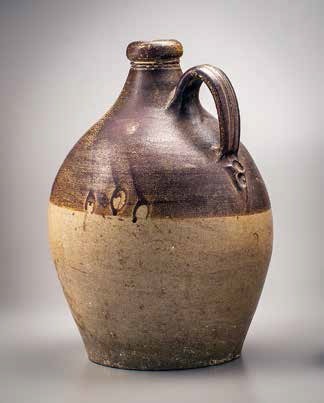
Jug, probably London, England, ca. 1740–1760. Salt-glazed stoneware. (Private collection; photo, Robert Hunter.)

Jar, Jonathan Fenton, Boston, Massachusetts, 1793–1796. Salt-glazed stoneware. H. 12 7/8". (William H. Chapman Collection; photo, Robert Hunter.)

Detail of the flower stamped on the jar illustrated in fig. 6.

Churn, William States Pottery, Stonington, Connecticut, ca. 1811. Salt‑glazed stoneware. H. 11". (William H. Chapman Collection; photo, Robert Hunter.)
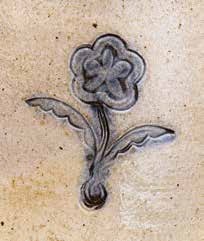
Detail of the flower stamped on the churn illustrated in fig. 8.

Jar, Jonathan Fenton, Boston, Massachusetts, 1793–1796. Salt‑glazed stoneware. (Courtesy, Peter Schriber.)

Jug, Jonathan Fenton, Boston, Massachusetts, 1793–1796. Salt‑glazed stoneware. H. 14 1/4". (Colonial Williamsburg; photo, Jason B. Copes.)
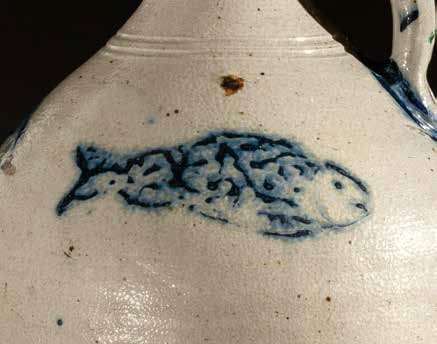
Detail of the fish stamped on the jug illustrated in fig. 11.
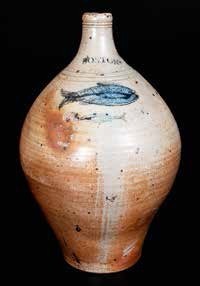
Jug , Jonathan Fenton, Boston, Massachusetts, 1793–1796. Salt‑glazed stoneware. H. 14". (Courtesy, Crocker Farm.)
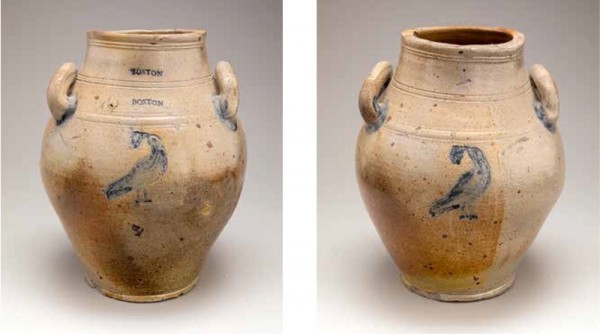
Jar, Jonathan Fenton, Boston, Massachusetts, 1793–1796. Salt‑glazed stoneware. H. 14". (William H. Chapman Collection; photo, Robert Hunter.)
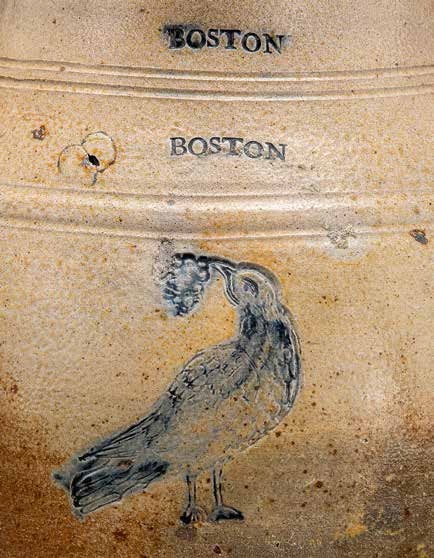
Detail of the bird stamped on the jar illustrated in fig. 14.
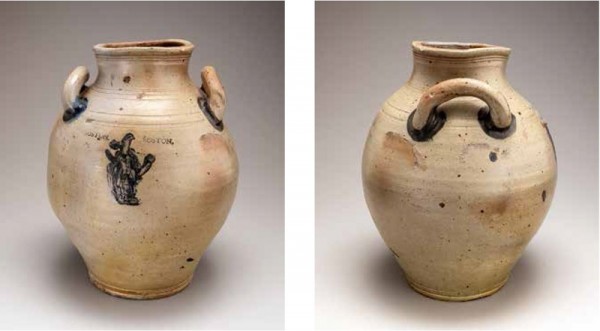
Jar, Jonathan Fenton, Boston, Massachusetts, 1793–1796. Salt‑glazed stoneware. H. 13 3/4". (William H. Chapman Collection; photo, Robert Hunter.)

Detail of the Native American figure stamped on the jar illustrated in fig. 16.
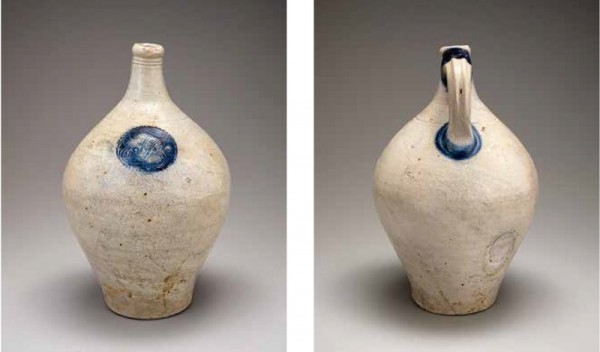
Jug, Jonathan Fenton, Boston, Massachusetts, 1793–1796. Salt‑glazed stoneware. H. 12 3/4". (William H. Chapman Collection; photo, Robert Hunter.)
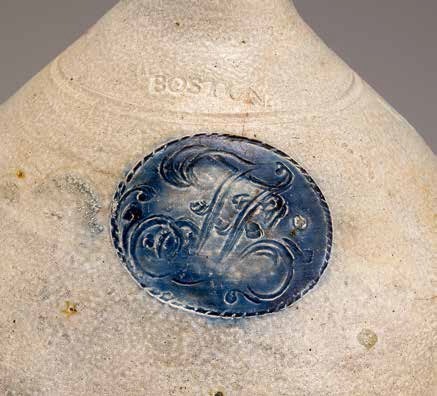
Detail of the entwined initials “J. F.” stamped on the jug illustrated in fig. 18.
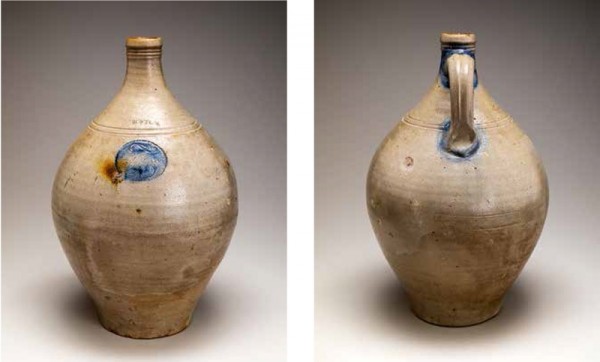
Jug, Jonathan Fenton, Boston, Massachusetts, 1793–1796. Salt‑glazed stoneware. H. 15 1/2". (William H. Chapman Collection; photo, Robert Hunter.)
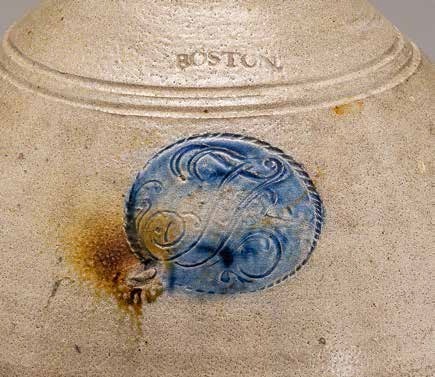
Detail of the entwined initials “J. F.” stamped on the jug illustrated in fig. 20.
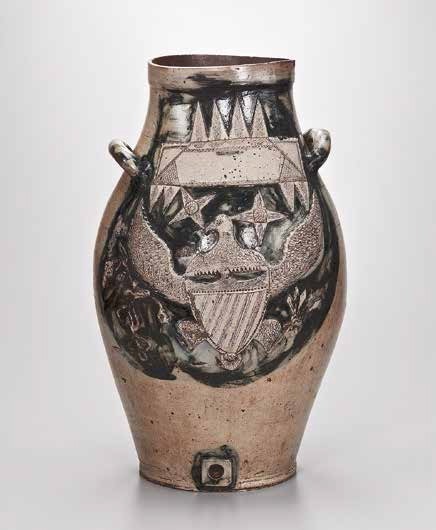
Cooler, attributed to Jonathan Fenton, Boston, Massachusetts, 1793–1796. Salt‑glazed stoneware. H. 24 3/4". (Courtesy, Collection of Robert A. Ellison Jr.; photo, Robert A. Ellison Jr. Metropolitan Museum of Art.)

Detail of the cartouche with the initials “R.H.W.” impressed on the cooler illustrated in fig. 23.
